Event Sponsorship: How To Get Sponsors for an Event?
Event sponsorship is a powerful marketing partnership between an event organizer and a company. In exchange for financial or in-kind support, sponsors gain brand visibility, audience engagement, and a direct connection with a targeted demographic. When aligned with the right goals and strategy, sponsorship can offset costs and elevate an event’s impact while delivering measurable value.
However, securing sponsors for an event can be challenging, even for seasoned organizers. This guide explains how to get sponsors–from finding the right partners with similar goals and audiences to creating winning proposals and packages–with actionable event sponsorship ideas, tips, and strategies.
- Event Sponsorship Takeaways
- What Is Event Sponsorship?
- Why Is Event Sponsorship Important?
- What Are The 4 Main Types Of Sponsorships For Events?
- What Are The Benefits Of Sponsoring An Event?
- What Are The 6 Steps To Get Sponsors For An Event?
- How To Create The Best Event Sponsorship Package?
- Event Sponsorship Examples That Can Inspire You
- Conclusion: Power Your Event With Sponsorship
- FAQs

Event Sponsorship Takeaways
- Event sponsorship is a partnership where event organizers gain funding and credibility, while companies or brands access enhanced exposure, engagement, and qualified leads.
- Securing sponsors requires a clear value proposition, strong data, and personalized outreach.
- Use solutions like Swapcard to enhance event sponsorship opportunities and ROI by integrating branding, analytics, and lead capture tools.
What Is Event Sponsorship?
Event sponsorship is a strategic partnership in which a company supports an event—financially or through products or services—in exchange for brand visibility, marketing exposure, and access to a targeted audience. Whether for B2B conferences, trade shows, or fundraisers, a well-executed sponsored event creates mutually beneficial value by boosting brand awareness and enhancing the event’s overall success.
Who Are Event Sponsors?
Event sponsors are companies, brands, associations, or individuals who support events to increase visibility, strengthen brand positioning, and reach a specific audience in a targeted context. In return, event sponsors provide financial support or in-kind contributions such as products, services, venues, or exposure.
Why Is Event Sponsorship Important?
Event sponsorship is a cornerstone of successful event management and brand marketing because it creates a win-win partnership between organizers and sponsors. For organizers, it provides essential support that can elevate the quality, scale, and reach of any event while offering a more memorable attendee experience.
If event sponsorship is important, finding the right sponsor can still be challenging. Organizers must understand what drives potential sponsors and the perks they can offer in exchange. Choosing the wrong sponsor can result in insufficient funding, a negative experience, reputational damage, or poor ROI.
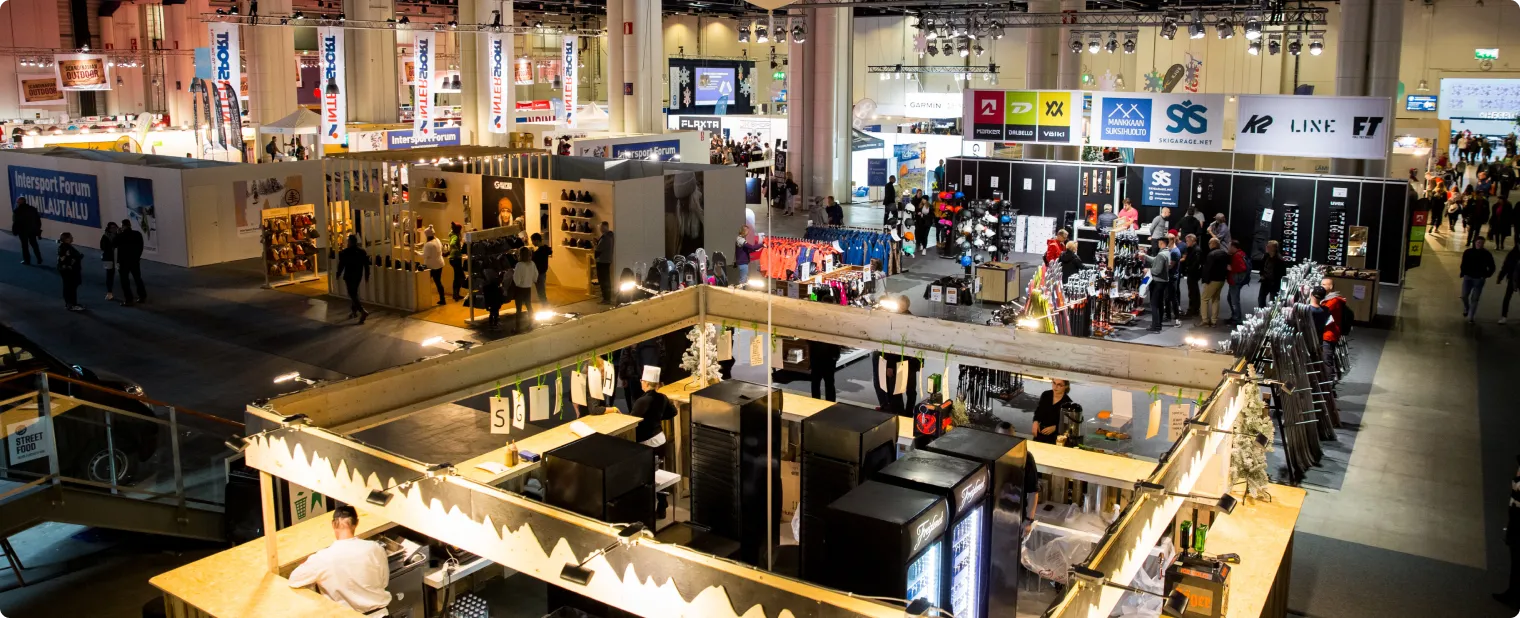
What are the 4 Main Types of Sponsorships for Events?
There are four main types of event sponsorship. Each type offers distinct benefits to both parties and can be combined depending on the event’s needs and the sponsors’ goals:
- Financial Sponsorship
- In-Kind Sponsorship
- Media Sponsorship
- Promotional Sponsorship
1. Financial Sponsorship
Financial sponsorship is the most common and sought-after type of sponsorship, where a company provides money to help fund the event. It can cover expenses such as venue costs, equipment, speaker fees, or marketing. In return, sponsors generally receive prominent brand placement on multiple channels.
For example, a tech company may pay €10,000 to become the main sponsor of a startup conference and receive logo placement on all communication materials—website, banners, brochures, signage.
2. In-Kind Sponsorship
In-kind sponsorship is a non-monetary contribution where sponsors provide goods or services that the event needs, such as catering, equipment, venue space, software, or marketing support. Often easier to secure, it helps offset operational costs without compromising quality and provides positive brand association. In-kind sponsorship is especially common in nonprofit events, where budgets are limited but brand exposure is still valuable.
In return, event sponsorship companies receive promotional benefits similar to those of financial sponsors. For example, a beverage brand may supply drinks for free in exchange for logo placement and sampling, or a tech company may supply AV equipment to a B2B tech conference in exchange for a speaking slot.
3. Media Sponsorship
Media sponsorship is a type of in-kind sponsorship in which a media outlet—a newspaper, magazine, TV channel, radio station, or digital platform—offers coverage, communication resources and promotional support to an event to boost it’s reach and visibility. In return, the media outlet receives brand visibility or association, press access, exclusive rights to cover the event and advertising opportunities.
For example, a B2B magazine might promote a trade show through dedicated newsletters and banner ads in exchange for on-site branding, a media booth, and exclusive interviews with keynote speakers.
4. Promotional Sponsorship
Promotional sponsorship is a form of sponsorship in which a company or a brand supports an event by promoting it through its own marketing channels—email campaigns, social media, physical locations, or partner networks–rather than contributing money or goods. This helps the event expand its reach by tapping into an existing audience without significant costs.
In exchange, the sponsor gains visibility, positive brand association, and potential engagement with the event's audience. For example, a coworking space might promote a startup pitch night to its entire member base through social media and internal emails. In return, the event organizer highlights the coworking brand as a community partner and offers a speaking slot during the opening session.
Promotional sponsorship is often combined with other sponsorship types (financial or in-kind) and is especially effective in community events, brand activations, and digital campaigns where visibility is a key driver of success.

What Are the Benefits of Sponsoring an Event?
Event sponsorship creates mutual value for both organizers and sponsors. While it helps fund, manage, and promote the event for organizers, it also benefits sponsors with brand exposure, positive association, targeted access, and opportunities that traditional advertising cannot always deliver.
For Organizers
From the organizer’s perspective, event sponsorship is more than just financial support; it is a strategic way to offset operational costs while improving event quality, boosting visibility, and increasing trust. Here are the four main benefits of getting sponsors for an event:
- Boosting the Event’s Budget
- Leveling Up the Event’s Credibility
- Increasing the Event’s Reach
- Improving Attendee Experience
Boosting the Event’s Budget
Sponsors provide funding that helps pay for essential costs—venue, catering, equipment, event management software expenses, or marketing campaigns. This reduces financial pressure on organizers and allows them to allocate resources more effectively and scale the event without stretching internal budgets. As more sponsors get on board, more budget can be unlocked, helping organizers focus on delivering the best event.
Leveling Up the Event’s Credibility
Partnering with a recognized and reputable sponsor can instantly strengthen the event’s credibility. It sends a clear message: the event is backed by trusted brands and is therefore worth attending. Attendees are more likely to participate in sponsored events, as it reassures them of the event’s legitimacy, encourages high-level speakers to join, and can attract media interest.
Increasing the Event’s Reach
Media or promotional sponsors can significantly expand an event’s visibility and help it reach a wider and more targeted audience. Sponsors will publicize the event and their involvement, and share content through their own communication channels, which may increase awareness, boost event registration, and strengthen overall engagement.
Improving Attendee Experience
Event sponsorship, when in-kind, can elevate the attendee experience by making the event more enjoyable, interactive, and memorable—without raising ticket prices. Sponsors can provide products or services that improve amenities, catering, and entertainment such as drinks, food, giveaways, charging stations, photo booths, exclusive speakers, interactive demos, branded lounges, and hosted meet-ups.
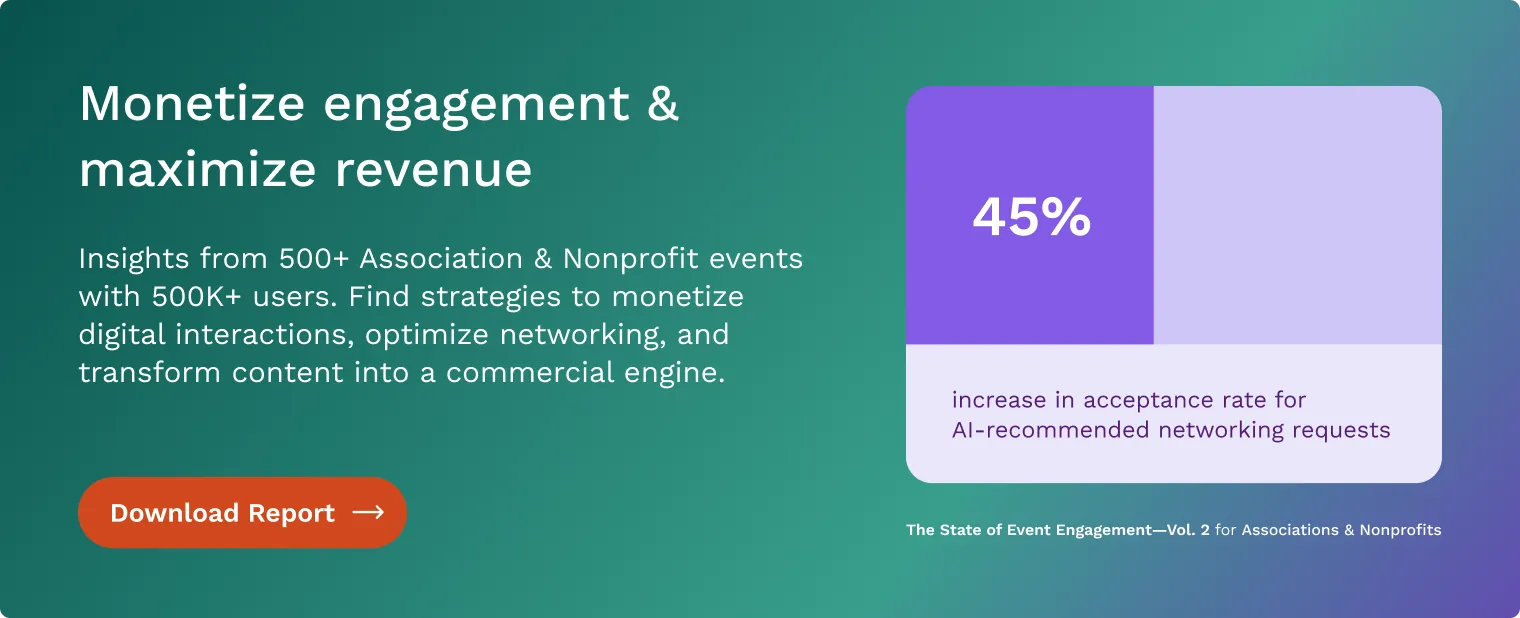
For Sponsors
For companies, choosing to sponsor an event is a strategic decision that helps them connect with their target audience, enhance visibility, and achieve measurable marketing objectives. Here are the three main benefits of sponsoring an event:
- Increasing Brand Visibility and Reputation
- Improving Target Audience Engagement
- Market Penetration and Extension
If carefully chosen and executed well, sponsorships go beyond logo placement—they create meaningful brand experiences that deliver both short and long-term value. However, to sponsor an event successfully, the opportunity must align with the company’s goals.
Increasing Brand Visibility and Reputation
Depending on the event sponsorship package, sponsors can display their logo on event marketing materials, appear on stage, host a branded booth, or be promoted through emails, websites, and social media. This visibility offers direct exposure to a qualified audience and helps strengthen brand recognition, as well as attract new leads.
Sponsoring a respected event can also enhance a company or brand’s reputation. It signals alignment with the event’s values, themes, and community, which can strengthen trust and perception among attendees.
Improving Target Audience Engagement
Events attract a highly qualified audience—professionals from the same industry, potential buyers, and people with shared interests. For sponsors, this creates a unique opportunity to engage directly with people who match their customer profile. Through product demos, workshops, live interactions, or one-on-one meetings, sponsors can generate conversations, collect feedback, and build trust with the audience.
Sponsors can also use the event as a touchpoint to gather insights directly from attendees to improve future campaigns or product offerings.
Market Penetration and Extension
Events give sponsors direct access to market extension, whether it is a specific region, industry, or demographic niche. Sponsoring an event is a strategic way to test positioning or introduce products to new potential customers.

What Are the 6 Steps to Get Sponsors for an Event?
Successful event sponsorship must follow certain steps to ensure that you get the necessary funding and support. Here are six essential steps to get sponsors for an event:
- Define the Value of the Event
- Identify the Right Sponsor
- Prove Event ROI
- Use Digital Platforms for Sponsorship Engagement
- Present an Event Sponsorship Proposal
- Follow Up and Build a Relationship
1. Define the Value of the Event
You must first assess the opportunities your event offers, and why it matters to potential sponsors. Ensure that your vision, objectives, format, and targeted audience are clearly defined. Whether the goal is to gather industry leaders, promote innovation, or enable networking, positioning will determine sponsor relevance.
To demonstrate value, prepare the following key data points:
- Audience profile
- Expected attendance
- Communication reach
- Opportunities for branding and content creation
This will help you clearly articulate the event’s value and answer any questions sponsors may have. At this stage, you must also understand sponsors’ needs and expected returns to ensure that both goals and visions are aligned, and to adapt your proposal accordingly.
2. Identify the Right Sponsors
Once the event’s vision and scope aredefined, identify potential event sponsors. The goal is not to contact every brand or company you can find, but to target sponsors that are a good fit—those whose goals align with the event’s and that have sponsored events in the past.
- Analyze the sponsor’s target audience: industry, interests, purchasing behavior, and professional challenges.
- Research similar events to see which companies have previously sponsored them.
- Consider less obvious options: local institutions, professional associations, or startups in your niche.
Once you have prepared your list of potential sponsors, qualify each lead:
- Does the company actively invest in marketing or events?
- Do they have a sponsorship or partnerships budget?
- Is there a clear point of contact?
3. Prove Event ROI
Sponsors commit only when the opportunity offers clear and measurable ROI. Attract sponsors by translating the event’s potential into tangible outcomes and showing data from previous events:
- Number of attendees and qualified leads
- Attendee demographics
- Social media impressions or engagement rates
- Average dwell time at booths or branded spaces
- Email open rates and click-throughs on sponsored content
- Attendance figures for sponsored sessions or activations
- Positive feedback and testimonials through a mobile event app
With Swapcard, sponsors can go beyond vanity metrics and track real impact. Our platform offers tailored solutions to measure lead generation, audience engagement, and interactions at each touchpoint—from event badge scans to in-app impressions. Each sponsor receives a post-event performance dashboard detailing their ROI and the metrics that matter most to their business goals.
4. Use Digital Platforms for Sponsorship Engagement
Digital platforms play a key role in making event sponsorship opportunities visible, credible, and easy to activate. In hybrid and virtual event sponsorship contexts, they are essential throughout the journey.
- Event website: Include a dedicated sponsorship page outlining available packages, audience insights, and sponsor benefits. Showcasing past sponsors and testimonials builds trust.
- Social media: Use LinkedIn, Instagram, or X to promote sponsors, share updates, and generate interest through spotlights or targeted posts.
- Email outreach: Personalize campaigns to initiate conversations and guide sponsors toward next steps.
- Virtual formats: Organize online meet-and-greets or webinars to offer direct interaction and discuss sponsorship opportunities.
During the event, platforms like Swapcard help streamline this process by integrating sponsor branding, networking tools, and analytics into a single environment, resulting in a better experience for both sponsors and attendees.
5. Prepare an Event Sponsorship Proposal
The sponsorship proposal is a structured document that outlines the event’s value and presents clear partnership opportunities to potential sponsors. To be attractive, it must show that the event is well-organized, strategically positioned, and aligned with the sponsor’s goals and expected returns.
Your event sponsorship proposal should include:
- A short description of the event: Start with a clear and engaging summary —name, format (in-person, virtual, hybrid), theme, date, location, and purpose. Highlight the uniqueness of your event or its specific relevance this year.
- Key audience data: Detail the demographics and professional characteristics of your attendees—industry, job roles, seniority, company size, regions of origin, or interests. Sponsors must be able to assess audience relevance to their target market.
- Visibility and engagement opportunities: Outline the branding, visibility, and engagement opportunities available during the event—logo placement, speaking roles, exhibition space, lead generation, and digital exposure. For each event sponsorship level or package, detail the perks the sponsor will receive.
- A communication roadmap and marketing reach: Provide an overview of how the event will be promoted—email campaigns, social media, media partners—and how the sponsor will be integrated into the strategy.
- Performance tracking and ROI measurement: Reassure sponsors by showing how their performance will be tracked—attendee metrics, social reach, engagement data, leads collected, etc.
- Contact information and next steps: End with a clear call to action—how to get in touch, next steps, and the timeline for confirmation.
6. Follow Up and Build a Relationship
Following up is essential to move from interest to conversation. Within a few days of sending the proposal, send a personalized message to suggest a short meeting. Once you secure a meeting, prepare a clear and concise pitch that explains:
- How the event creates value for their brand
- How success will be measured
- What makes this opportunity stand out from others
Relationship building matters as much as the offer itself, and it does not stop once the deal is signed. Keep sponsors informed and involved in the event’s progress through regular updates, sneak peeks, or sponsor highlights on social media, showing that you value their brand.
After the event, share results and performance metrics to demonstrate ROI, lay the foundation for future collaboration, and potentially secure early commitment for your next event.
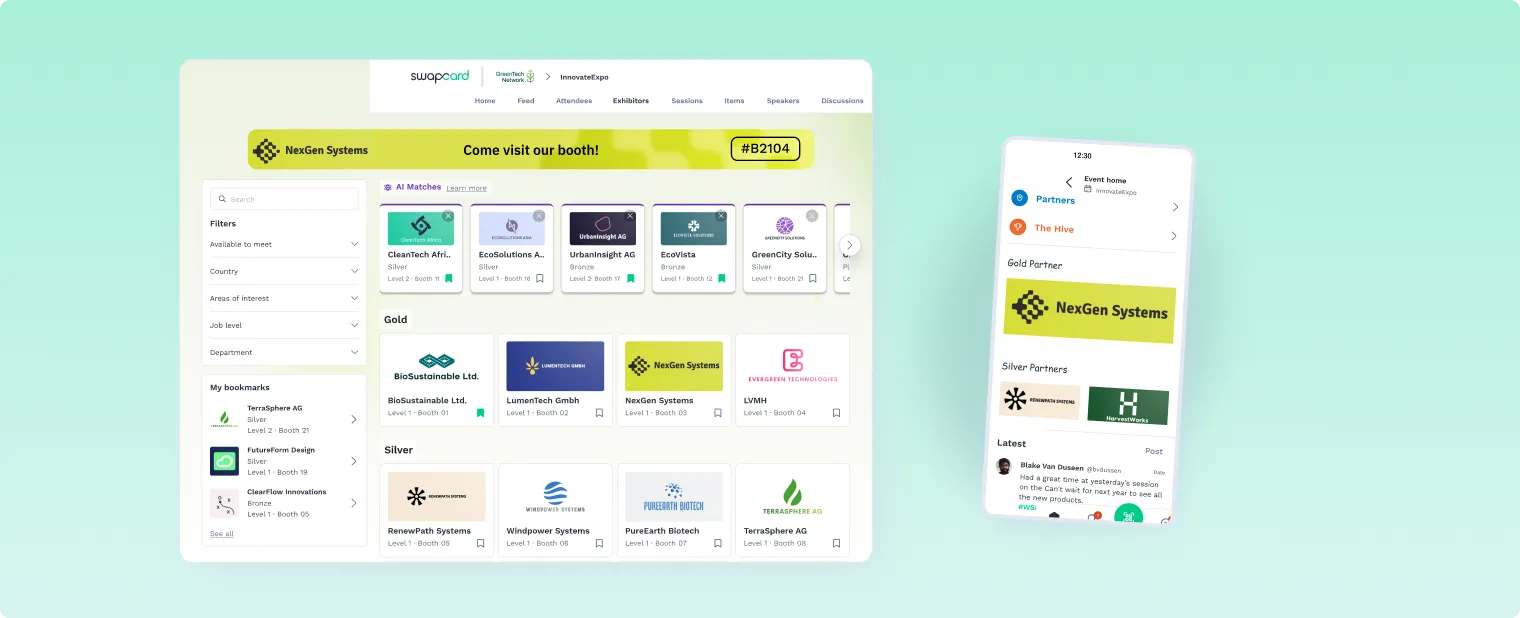
How to Create the Best Event Sponsorship Package
A sponsorship package is a structured offer that outlines the perks a sponsor receives in exchange for their support. It aims to:
- Help sponsors assess the value of their investment
- Allow them to choose the level of involvement that fits their goals
- Show them how they will reach and engage with the event audience
To create the best event sponsorship package, you must target the needs of sponsors without compromising your vision:
- Make it Meaningful
- Make it Exclusive
- Make it Clear
- Make it Flexible
- Make it Visual
- Make it Measurable
Make it Meaningful
Most events offer three to four levels of sponsorship, and each level should correspond to a different type of brand involvement. For instance:
- Bronze: Logo placement on-site and digital, one social media mention
- Silver: Bronze + speaking slot in a breakout session
- Gold: Silver + hosted activity (workshop, panel) + access to lead list
- Platinum: Co-branding of a key moment (opening keynote, VIP lounge) + media coverage
Sponsors should be able to scan your package table and immediately identify which level aligns with their goals.
Make it Exclusive
Some sponsors seek visibility that sets them apart. Go beyond standard tiers by offering exclusive branding opportunities such as:
- Title sponsor: Give a company or brand full naming rights for the event, like "[Sponsor] presents...". This ensures that their name appears on all official event materials.
- Zone ownership: Offer branded control over high-traffic areas such as networking lounges, coffee break zones, or even the event app interface.
- Experience ownership: Let a sponsor own a specific activation that becomes a memorable moment —photo booth sponsorship, recharge zone wrapped in sponsor visuals, or an after-work session hosted by the sponsor.
This exclusivity adds scarcity and prestige to your event, creating higher perceived value and often justifying a higher price tag.
Make it Clear
Sponsors must know exactly what they are paying for. Be specific when drafting your event sponsorship package:
- Where will their sponsor logo appear? (Stage, website, lanyards, etc.)
- How many social media mentions? On which platforms?
- Will they be featured in newsletters or push notifications?
- Can they distribute branded materials or samples?
Don't just promise "audience exposure" or "high visibility". Sponsors want to know how they will generate qualified leads from your event. Make it tangible by detailing the exact touchpoints and mechanisms available to them:
- Badge scans: Will they have access to an event badge scanner at their booth or during sponsored activities? Will the scanned data include contact info, job titles, or interests?
- Session attendance tracking: If a sponsor leads a breakout session or workshop, will they receive the list of attendees? Can they get opt-in emails for follow-up?
- Form completions: Are there lead capture forms linked to downloads, contest entries, or giveaways? Can sponsors customize them and access the data in real time?
- App interactions: Does your event platform allow sponsored banners, push notifications, or in-app messages? Can you measure clicks, views, or time spent?
Make it Flexible
Not all sponsors measure success in the same way. Some are focused on lead generation, others on brand visibility, or product experience. Flexibility shows that you are not just selling shelf space but creating value. It transforms sponsorship into a strategic collaboration.
Structure your offer with modular tiers that adapt easily. For instance, replace a speaking slot with lead generation, or trade on-site presence for extended branding. Add à la carte options like extra banners, push notifications, or sponsored content to customize visibility and match the sponsor’s goals.
Make it Visual
A great sponsorship package is easy to read and quick to compare. A sponsor should understand the content of each level of sponsorship in under a minute, and the added value they would get by choosing a higher-tier package over a lower one.
Use a comparison grid that aligns all tiers side by side, with benefits organized in clear rows—branding, speaking, lead generation, visibility, exclusivity—and with checkmarks or numbers indicating the content at each level. Add icons to improve readability and highlight your most popular or recommended package.
Make it Measurable
Sponsors require proof that their investment will deliver results. Every package must include clear KPIs and a defined roadmap for tracking them. Explain how performance will be monitored during and after the event:
- Attendance: Total number of participants, breakdown by profile, and turnout at sponsored sessions or activities.
- Lead generation: How leads are captured—via badge scans, session registrations, contest entries, or newsletter sign-ups.
- Engagement: Time spent in sponsor areas (physical or digital), click rates on banners or links, app interactions.
- Visibility: Social media reach, post impressions, mentions, and content engagement.
- Feedback: Include sponsor satisfaction and qualitative data from post-event surveys.
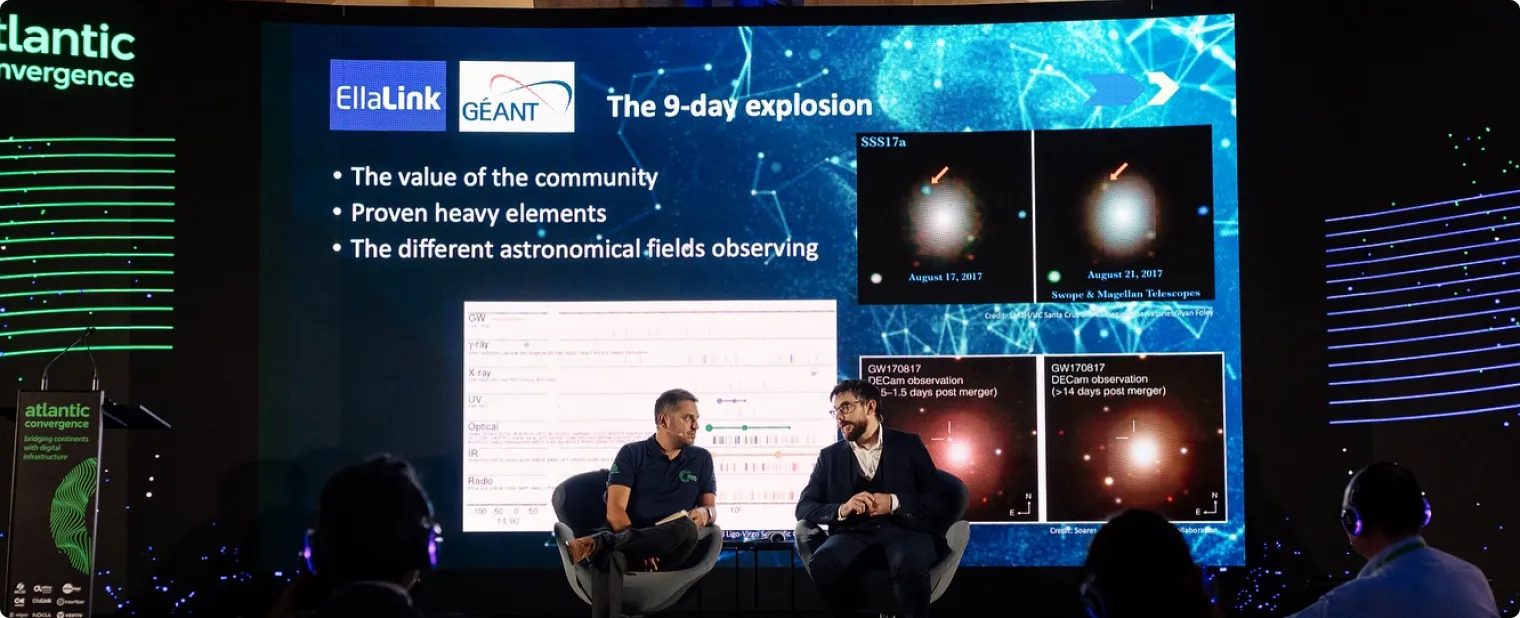
Event Sponsorship Examples That Can Inspire You
Looking for inspiration to shape your sponsorship strategy? Here are three event sponsorship examples where Swapcard helped organizers choose the right approach to drive engagement, visibility, and measurable results.
Atlantic Convergence – Premium In-Person Sponsorship
At Atlantic Convergence, an annual in-person gathering of Atlantic-border countries, Swapcard enabled sponsors to deeply engage with the audience through advanced networking features:
- Sponsors provided branded meeting rooms and pre-scheduled appointments
- Custom exhibitor profiles gathered leads via badge scanning
- The platform managed communications for sixty-two countries and promoted sponsor visibility
This resulted in streamlined exhibitor-sponsor connections and measurable lead capture via event badges.
SOAHR 2020 – Turning Virtual into a Sponsorship Win
When the SOAHR HR Conference in Atlanta had to fully go virtual due to the pandemic, the organizers partnered with Swapcard to completely redesign the sponsorship experience.
Key Sponsorship Features:
- Virtual booths with integrated video calls, downloads, and contact forms
- Sponsored breakout sessions and Q&A
- Digital swag bags filled with discounts and partner offers
- Live gamification challenges branded by sponsors
Results:
- 85% active platform usage
- 17,000+ messages exchanged between attendees and exhibitors
- 5,000+ connections made
Vincenzaoro Jewelry Fair – Enhanced Sponsor ROI
During the 2024 edition, the Vincenzaoro jewelry trade show achieved record exhibitor ROI with Swapcard, thanks to:
- AI-powered event app that increased visibility and connections
- Streamlined registration, on-site badge printing, and enhanced visiting schedules
- Up to six times more exposure reported by exhibitors and ten times more contacts compared to previous years
Conclusion: Power Your Event with Sponsorship
Event sponsorship is a strategic partnership that can significantly enhance the value and reach of your event. By identifying the right sponsors, creating compelling sponsorship packages, and leveraging digital platforms, you are designing a successful event for both attendees and sponsors.
Beyond securing sponsorship, guiding sponsors throughout their journey—before, during, and after the event—can significantly improve results. Platforms like Swapcard offer structured frameworks to support this approach and help turn one-time sponsors into long-term partners.
Ready to elevate your event with strategic sponsorships? Get in touch with our team to discuss how Swapcard can help you achieve the best event outcomes and turn engagement into revenue.
FAQs
When Should You Seek Event Sponsorship?
Seek event sponsorship when:
- You require financial or in-kind support: If your budget is limited or relies heavily on external funding, sponsors can offset large costs, whether financially or through services, equipment, or expertise.
- You want to elevate the event’s quality or scale: Sponsorship can help you upgrade your event’s experience—offering better venues, higher-profile speakers, interactive experiences, or enhanced amenities that increase attendee satisfaction and event impact.
- You require strategic partners for promotion: Sponsors can bring visibility and marketing muscle by promoting the event through their own channels, especially when launching a new event, targeting a niche audience, or entering a new market.
- You want to boost credibility and trust: Aligning your event with well-known brands or respected organizations enhances its legitimacy in the eyes of attendees, media, and partners.
- You want to build industry relationships: Seeking sponsorship can be a strategic move to open doors and establish relationships in your sector.
Where to Find Event Sponsors?
Look at past sponsors from similar events, industry partners, local businesses, or startups in your niche. Explore LinkedIn, sponsor directories, and association member lists to gather a list of potential sponsors that match your vision and objectives.
What Do Sponsors Get in Return for Sponsoring an Event?
Sponsors gain brand visibility, direct access to a qualified audience, and measurable engagement opportunities. The return depends on the selected package and how well it aligns with their goals.
How Much Should a Sponsor Pay for an Event?
Event sponsorship packages can range from a few hundred to several thousand euros. The key is to align pricing with tangible deliverables and expected ROI.
What Are the ABCs of Event Sponsorship?
The “ABCs” of sponsorship refer to three essentials:
- Audience: Know your attendees and show why they matter to the sponsor
- Benefits: Clearly outline the perks the sponsor gets in return
- Credibility: Demonstrate the quality and professionalism of the event—past success, partners, media coverage
How to Convince a Company to Sponsor an Event?
Show sponsors how the event matches their company strategy, target audience, and marketing KPIs. Share data—audience profile, reach, engagement—and present clear and customizable packages. Highlight past sponsor success and offer flexibility.
Join 12,000 subscribers and unlock industry secrets.
By submitting this form, you agree to receive periodic emails on insightful content related to events and our product, and in accordance with our Privacy Policy. You can, of course, change your preferences or unsubscribe at any time.
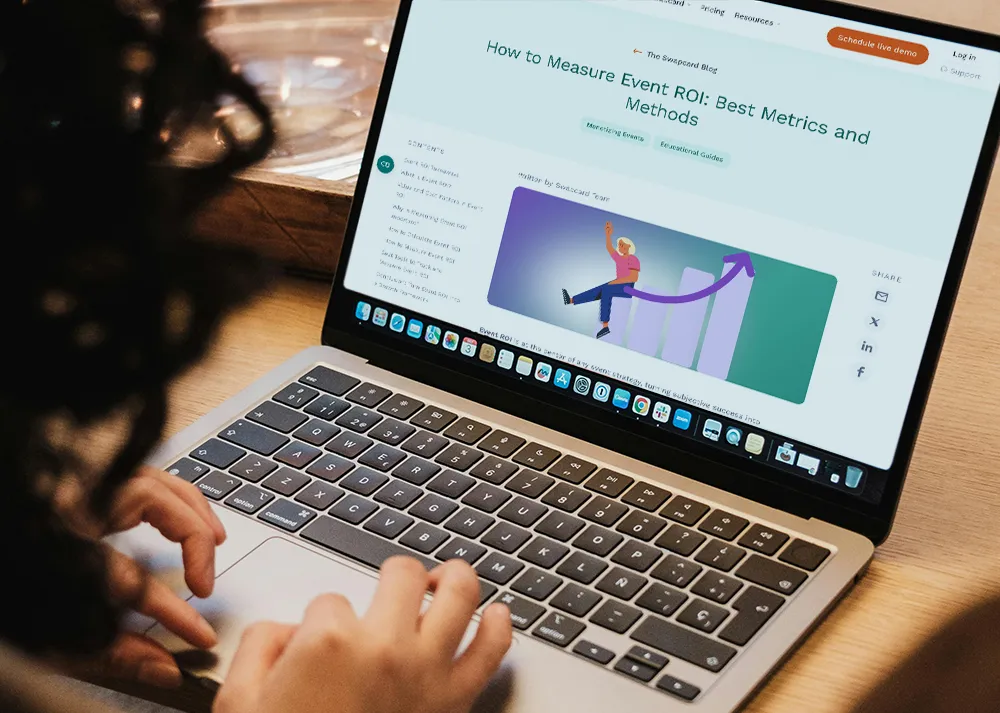




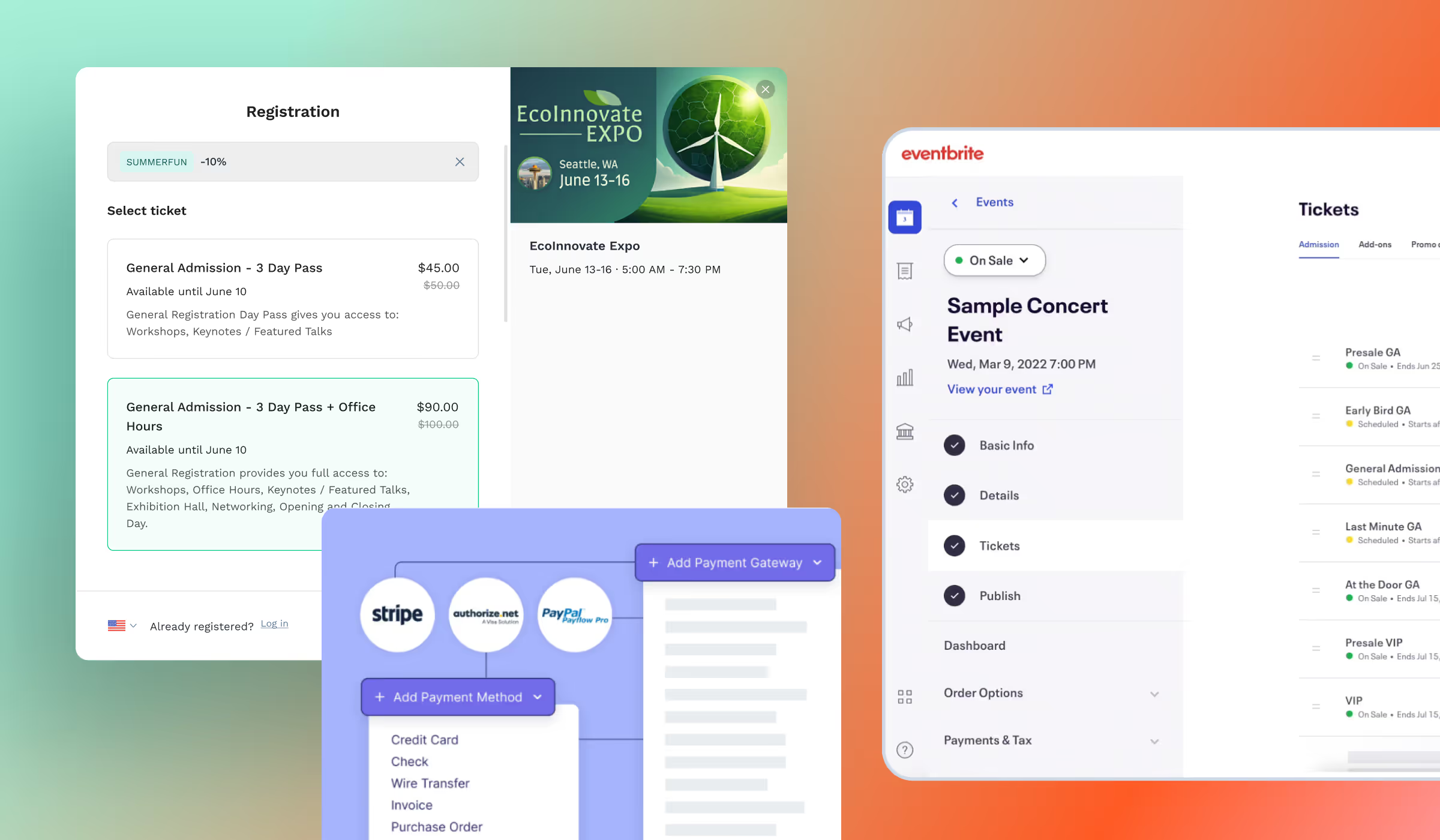

.svg)


.svg)
.svg)
.svg)





